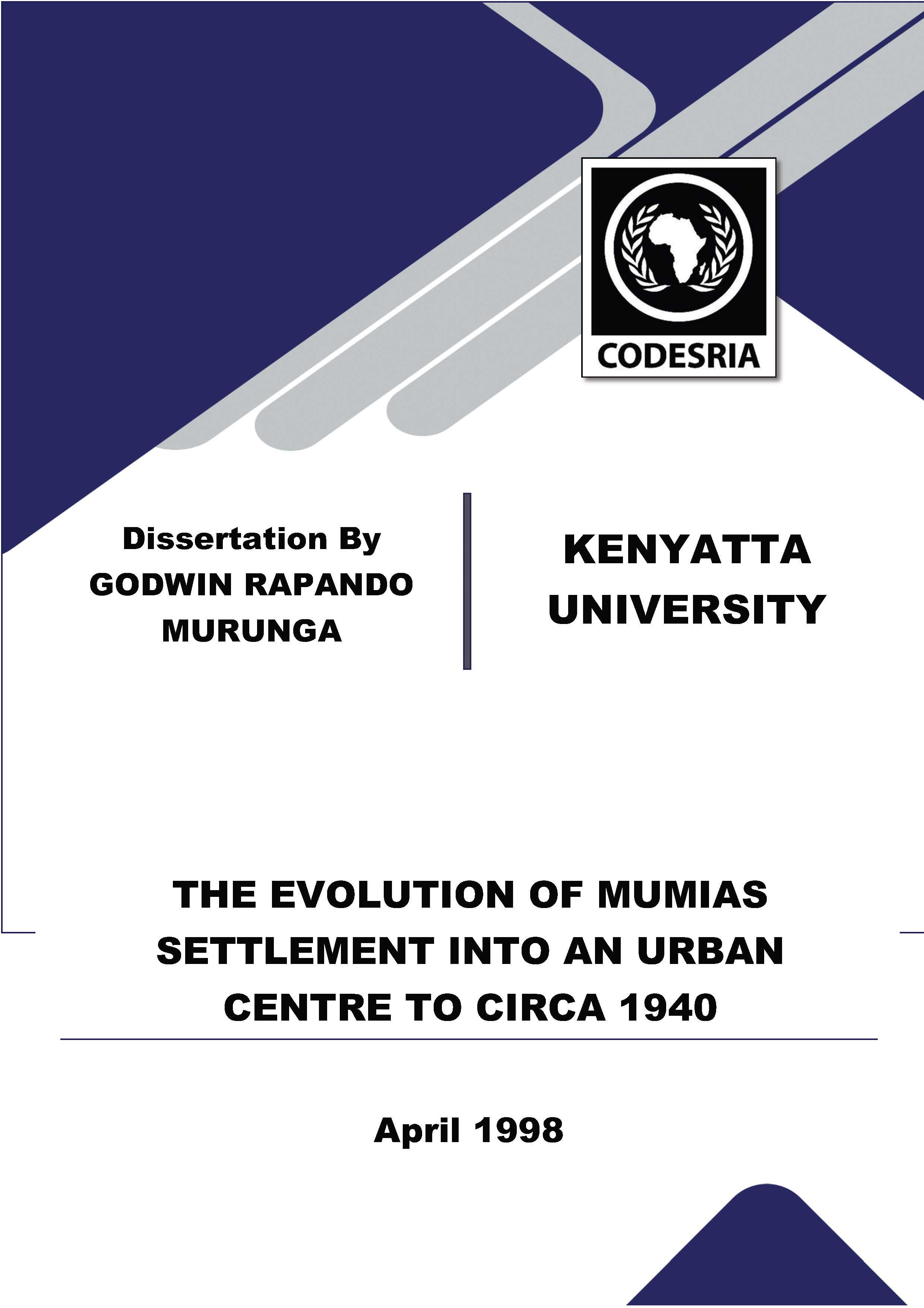THE EVOLUTION OF MUMIAS SETTLEMENT INTO AN URBAN CENTRE TO CIRCA 1940
Keywords:
EVOLUTION, MUMIAS, URBAN CENTRE, CIRCASynopsis
This study examines the evolution ofMumias into an urban centre. It adopts and critiques the Weberian approach to urbanization and also re-asserts the underdevelopment perspective of unequal exchange and uneven development. In the framework of the underdevelopment theory, the place of merchant-capital in the development of Mumias is explained. The study demonstrates the relevance and/or lack of it of these theories in understanding the physical structure and social processes that characterised the evolution of Mumias from its earliest time to the year 1940. The study begins on the premise that there is no standard criteria of determining an urban centre and that the Wanga had their own form of urbanism. The whole question of urbanization has to be re-examined and defined beyond Western definitional strait-jackets. The functionality of the Wanga urbanism is demonstrated in the importance of Itookho, the traditional name for the capital. The idea of Itookho is central in the urbanism of the Wanga. Its location, functions and changing character were a product of the centres response to the local needs and aspirations of the Wanga and their gerontocracy. The politico-administrative imperatives of the institution of Nabongo and the attendant sociocultural and economic roles were pertinent aspects that defined Itookho. The place of the Maasai in the changing nature and functions of Jtookho is also underscored in the study. By 1860, Itookho had evolved into a key aggregation of humans for socio-cultural purposes in its urban evolution. CODESRIA
Downloads






